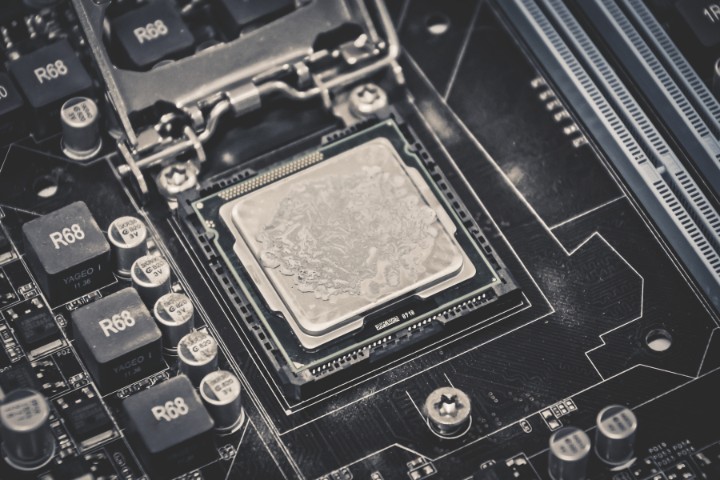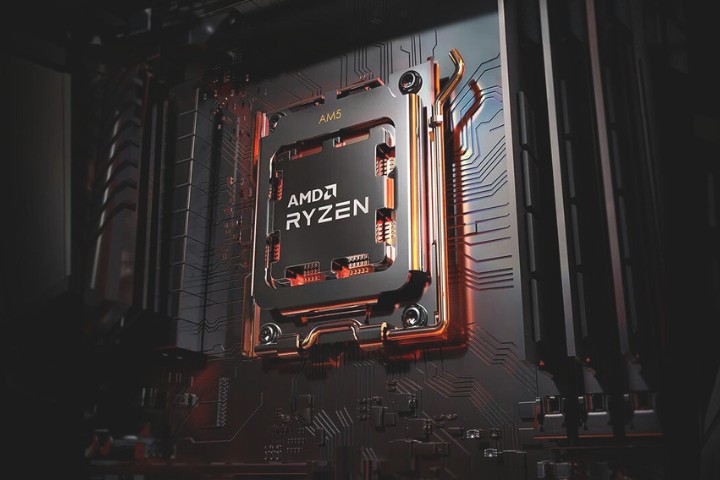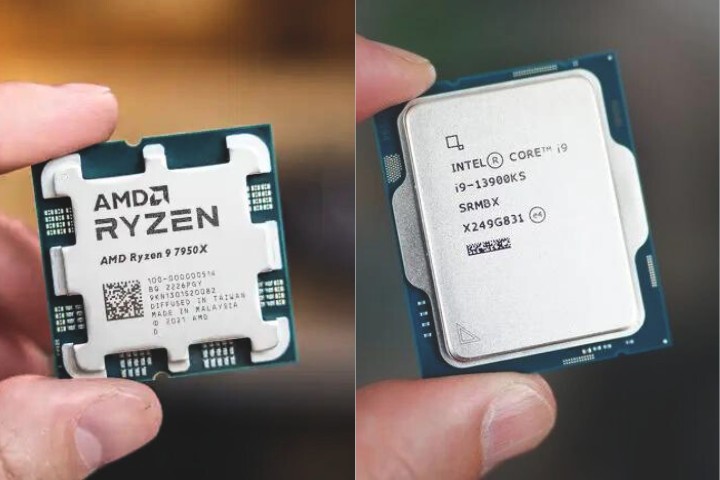In order to know how to increase clock speed of processor in PC? We need to do something before Starting it. Tweaking the performance of the CPU can delay or even avoid the need for an immediate upgrade. Since an upgrade may cost a lot of money, you can try to increase the speed of the processor which is otherwise known as overclocking to boost your PC performance.

How to Increase Clock Speed of Processor in PC?
Clock speed is usually measured in GHz (gigahertz). The higher the clock speed the faster your processor will be able to run programs. The process of increasing the clock speed is not just a simple one. It requires a number of steps, Here we go:
Increasing the Clock Speed (Gigabyte, ASUS, ASRock, MSI, BioStar)
Every motherboard has a different user interface and it might be difficult to find the overclocking settings. Here is a guide on overclocking for some of the popular motherboards. Once you are all set to overclock, follow these steps to perform the boost safely:
ASUS
When it comes to overclocking, ASUS motherboards are one of the best. They provide a host of options that allow the user to change settings on their motherboard that can affect performance and stability. The BIOS software for ASUS motherboards is top-notch and allows you to easily configure overclocking settings for your computer. Here are the steps:
- Restart your PC and enter into the BIOS settings by repeatedly pressing the Delete button as soon as the first screen appears.
- You will enter into the EZ mode of the BIOS settings. Then press F5 to get into the Advanced Mode.
- In the Advanced Mode, go to the Extreme Tweaker tab.
- The Extreme Tweaker settings will have an option called overclocking presets. Below that go to the CPU core Ratio option and change it to “Sync All Cores”.
- After that change the 1-core ratio limit to the desired value and exit the setup by saving the settings.
- You can also tweak the CPU core voltage in the extreme tweaker tab.
Gigabyte
Every overclocking method has its own limitations, but Gigabyte motherboard overclocking is one of the most popular methods. This motherboard overclocking is the process of creating a custom set of parameters for overclocking your motherboard. Here are the steps:
- Restart your PC and press the Delete button continuously as soon as the first screen appears. This will enable you to enter into BIOS settings.
- The Landing page will be a tab named M.I.T. Enter into the “Advanced Frequency Settings” option.
- After entering the settings, you will find an option called CPU clock ratio. It will be set to the base clock speed. You can enter the desired value and exit the setup by saving the settings.
- If you want to adjust CPU voltage, you can find it in the “Advanced Voltage Settings” option in the M.I.T section.
ASRock
For any new ASRock motherboard, the default voltage is set to 1.2V by the manufacturer. If you are overclocking, this might not be enough for you. The CPU voltage will also have to be increased for the CPU to work at higher speeds.
ASRock has designed a BIOS setting that can automatically adjust your CPU voltage if your motherboard detects that your CPU needs more power. Here are the steps:
- Restart your PC and enter into the BIOS settings.
- The landing page will have a tab called OC tweaker. Enter into that tab.
- In the OC tweaker menu, convert the “CPU Frequency and Voltage Change” option from Auto to Manual.
- Upon converting, it will display the Frequency and Voltage options below.
- Enter the desired frequency value in the option and exit the settings by saving them.
- You can also change the voltage which is present below the frequency settings.
MSI
The MSI motherboard overclocking helps you to maximize the performance of your system. When someone decides to overclock their CPU, they need to check that the CPU is compatible with the motherboard.
We should remember that overclocking is not recommended for non-experts. We recommend that you only overclock your system if you know what you are doing, Here are the recommended steps how to do it:
- Restart your PC and enter into BIOS by pressing the Delete key.
- You will land on the EZ mode of the BIOS settings. Press F7 to enter into the Advanced Mode.
- In the advanced mode, Click on the OC menu.
- There you can find the CPU ratio set to the base clock ratio. Enter the desired value to increase the speed.
- There is another option called Ring Ratio which increases the frequency of non-core components. You can set it three values less than the CPU ratio.
- Exit the setup by saving the settings. You can also tweak the voltage in the same OC menu.
Bio Star
Bio Star motherboard overclocking is a common practice in the PC enthusiast community. To overclock your motherboard, you will need to know your motherboard model and the BIOS version of your motherboard. You will also need to know if you want to use the manual or auto overclocking mode. Here are the steps to follow:
- Restart your PC and enter into BIOS settings.
- In the Main menu, you will find an option called Pstate configuration and click on it.
- You can find an option called Core FID and using the “+” or “- “keys on your number pad you can adjust the frequency value.
- Similarly, you can adjust the voltage value mentioned below the Core FID.
- Exit the setup by saving the settings.
Things to do before overclocking
Before overclocking, you should perform certain tests and consider the following safety measures:
Find out the motherboard and processor capabilities
It is important to know the base clock speed and the boost clock speed of the processor to tweak the settings safely. You can know this from the system settings. Also, your motherboard should be compatible with overclocking which will be mentioned in your manufacturer’s website or manual.
Run a stress test
The stress test will give you a benchmark to compare the overclocked ability of the processor. Also, it will run your CPU at full load with the base settings and inform you of any issues. If you come across any problem during the stress test, then it is not advisable to overclock before solving that issue.
Check the CPU temperature
Increasing the clock speed will generate a lot of heat. If your CPU generates more than 70 degrees Celsius during the baseline stress test, then enhance your cooling capacity before overclocking. Otherwise, it can damage your processor and its performance.
Also Read: About Cores and Threads in a Processor
Do all processors support overclock or speed increase?
No, only the unlocked processors support overclocking. Even though theoretically all processors are capable of overclocking, the chip manufacturers don’t allow it.
- In Intel, all the processors named with the letter ‘K’ or ‘X’ can be overclocked.
- In AMD, all Ryzen processors can be overclocked. Apart from these, other processors don’t support overclocking.
Is increasing processing speed is safe?
Increasing the processing speed has potential dangers to the processor and its performance. Even though the modern processors come with overclocking ability, the following are certain dangers and disadvantages associated with overclocking:
- Over heating of the CPU and other components
- Extreme Power consumption
- Damage to CPU and other components such as RAM and motherboard
- Unexpected Errors may occur
If there is an actual need for overclocking, you might do it safely with all the necessary steps. Otherwise, it is better to run the CPU at its usual clock speed. Or you can overclock it for short period and bring it back to its base clock speed.
What is the purpose of processor speed increasing?
- Increasing the processor speed means it can perform more operations per second. This enables your PC to execute commands faster.
- Due to increased performance, your PC can run games, render videos, display high quality images and videos without any lag.
- It will give a smooth and seamless user experience.
Does Overclocking increase power consumption?
Yes, overclocking increases the power consumption even if the CPU voltage is not tweaked. Since the processor starts to perform more operations per second, increasing the clock speed will consume power heavily. Also, the increased heat release from the processor requires an enhanced cooling system. This adds to the power consumption and thus increases the overall power required to run an overclocked PC.
Conclusion
Increasing the clock speed of a computer processor can boost performance significantly. But ensuring whether the PC is equipped for overclocking is important. Proper cooling systems and running stress tests are important to perform a successful overclocking. It is always advisable to use the processor at its base clock speed to avoid any damage.








